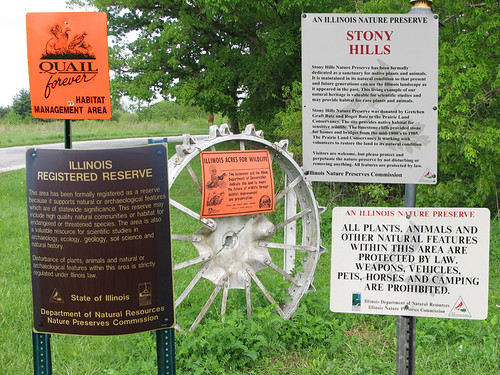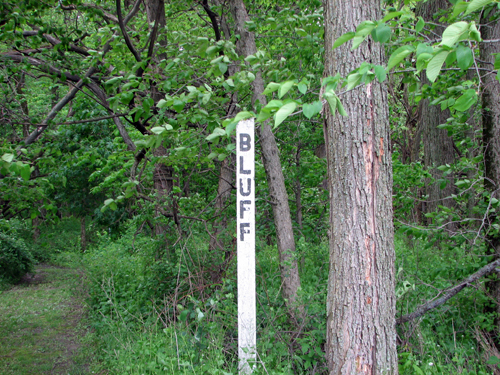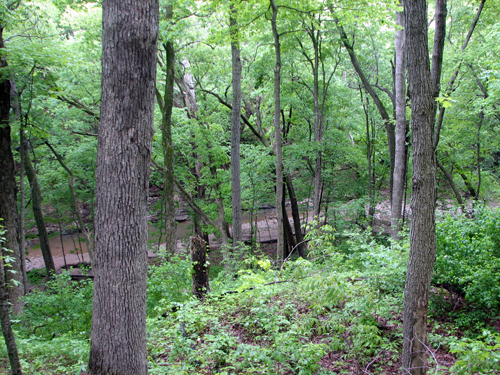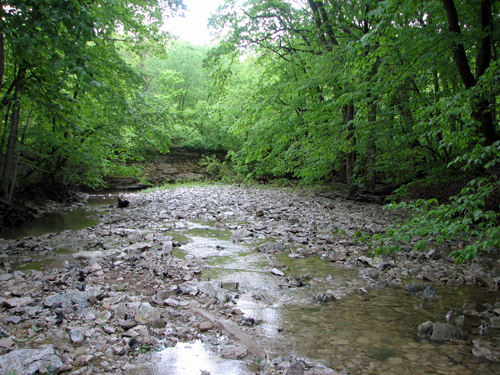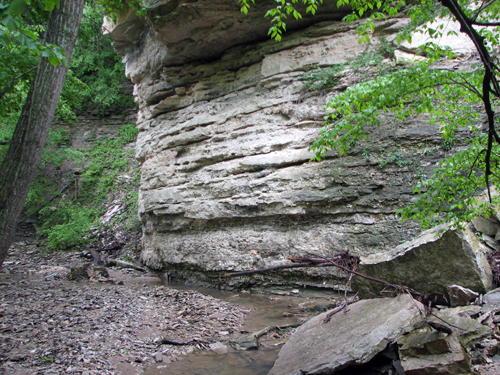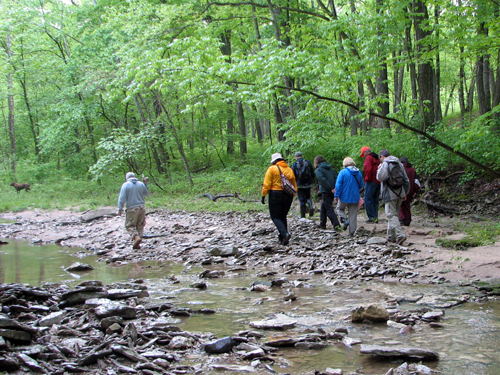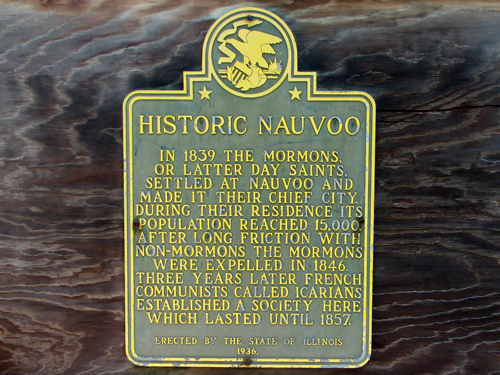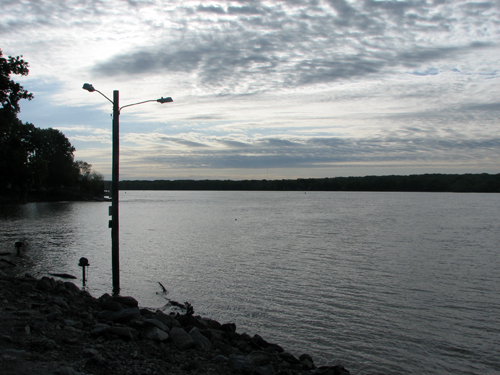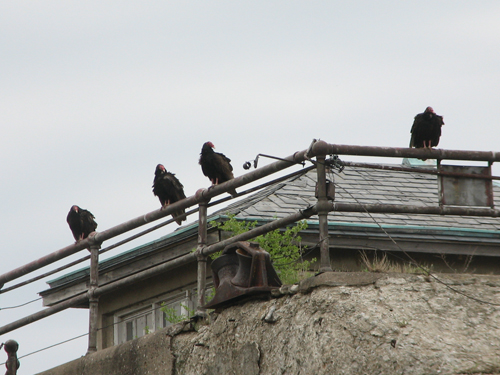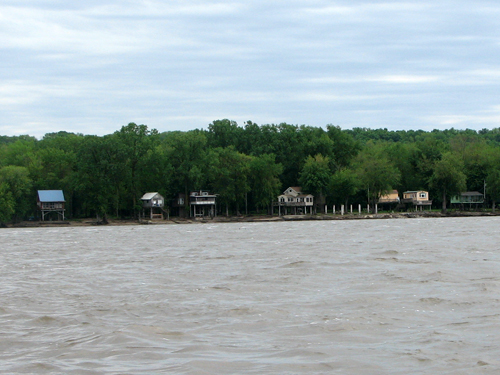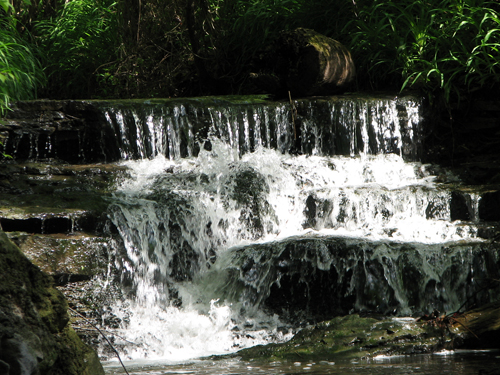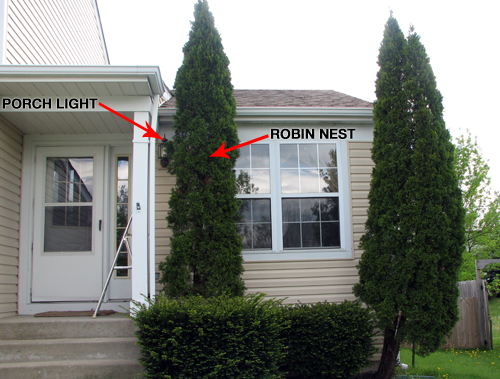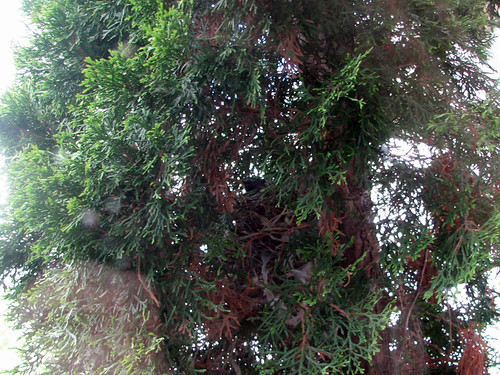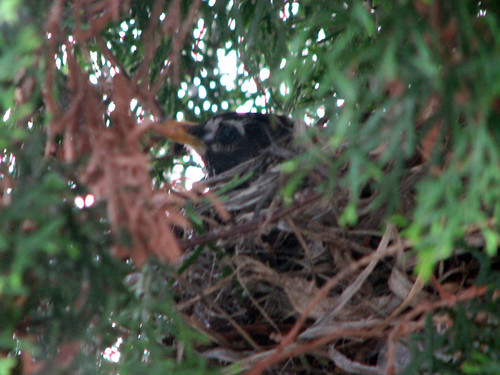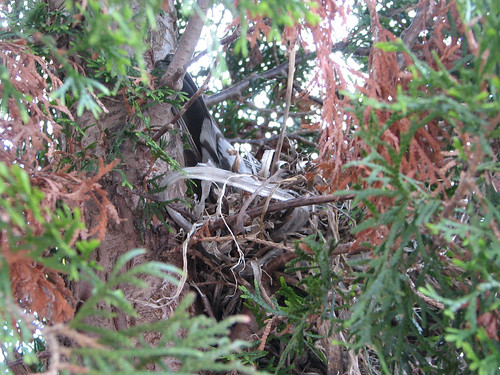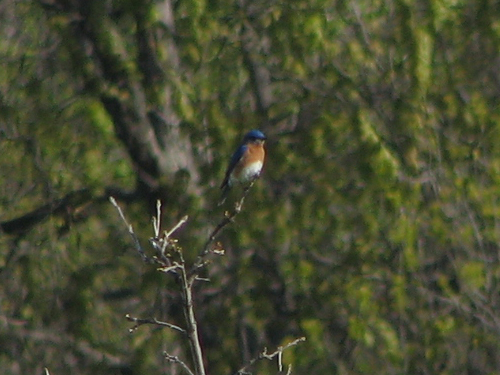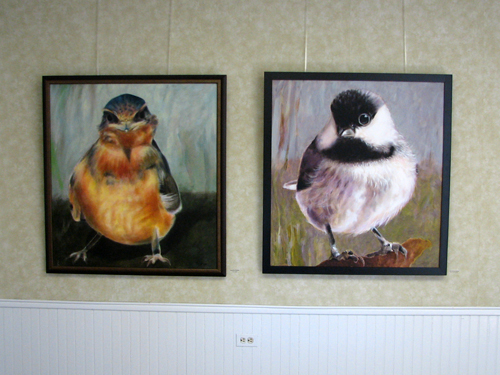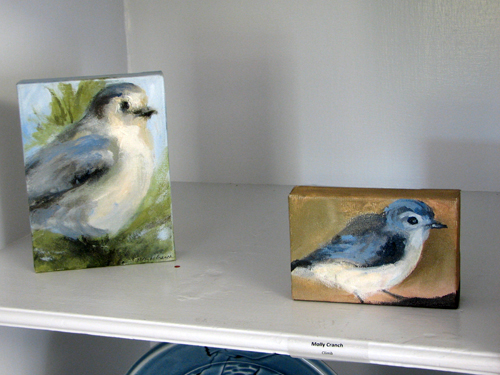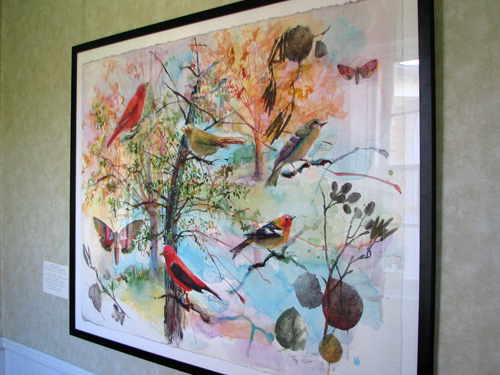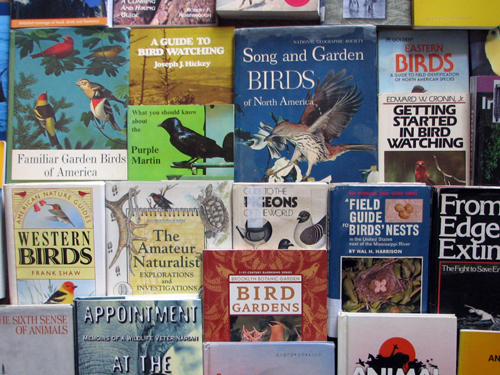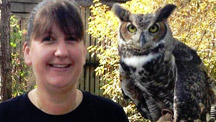Our Sunday morning excursion during the final day of the Illinois Audubon Spring Gathering was at Stony Hills Nature Preserve.
They had signs and they weren’t afraid to use them (below picture is a composite).
This was our birdiest field trip of the weekend, but most birds were heard rather than seen. We did start off with a nice Summer Tanager on a wire for all to see. Field Sparrows were singing, we heard a Wild Turkey gobbling off the trail, a distant Tufted Titmouse sang unseen in the forest, and everyone got really nice looks at a Great Crested Flycatcher.


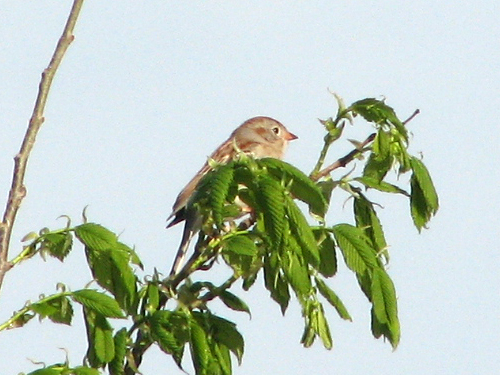
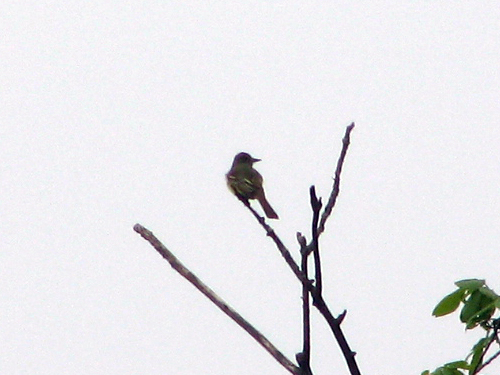
This was our last excursion before the wrap-up lunch at Nauvoo State Park. We had some time to kill before heading to lunch so we stopped briefly at Nauvoo Flat Wildlife Sanctuary. From there we had a nice view of the river and saw two adult Bald Eagles, several American White Pelicans, a flyover (erratic!) Eastern Kingbird, and a very nice Palm Warbler.
It was a fun weekend and I’m looking forward to the next Illinois Audubon gathering!

